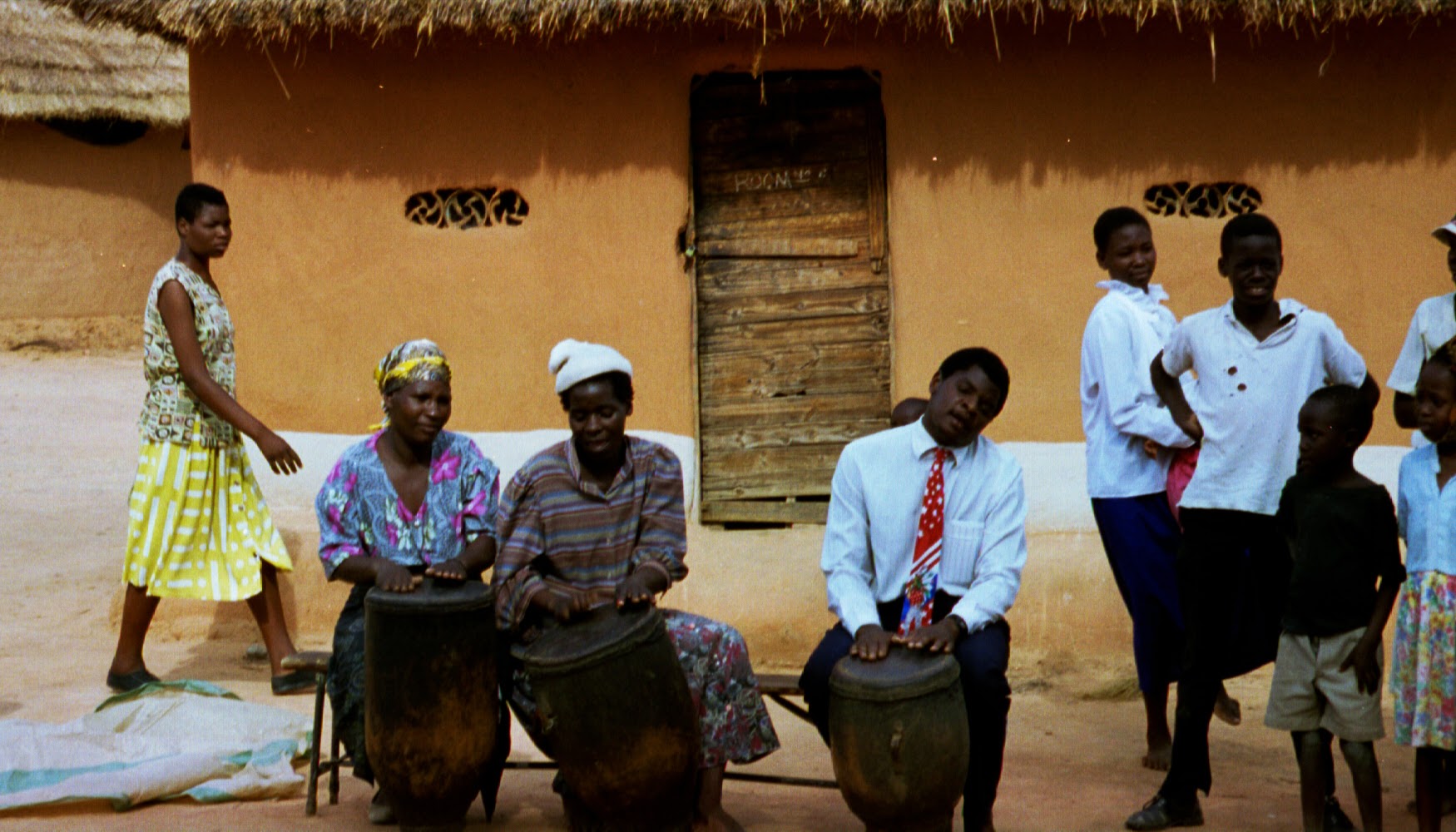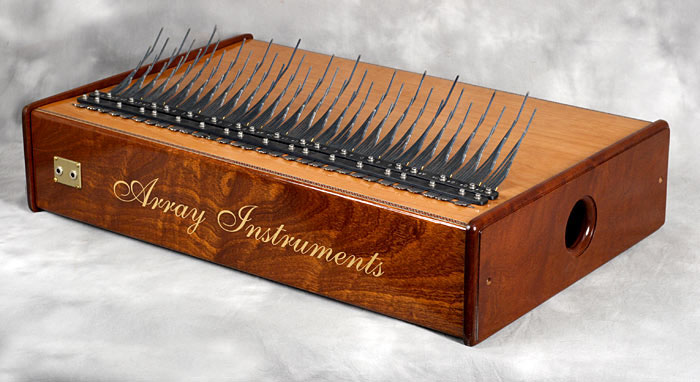|
Mbira
Mbira ( ; ) are a family of musical instruments, traditional to the Shona people of Zimbabwe. They consist of a wooden board (often fitted with a resonator) with attached staggered metal Tine (structural), tines, played by holding the instrument in the hands and plucking the tines with the thumbs (at minimum), the right Index finger, forefinger (most mbira), and sometimes the left Index finger, forefinger. Musicology, Musicologists classify it as a lamellaphone, part of the plucked idiophone family of musical instruments. In Eastern and Southern Africa, there are many kinds of mbira, often accompanied by the hosho (instrument), hosho, a percussion instrument. It is often an important instrument played at religious ceremonies, weddings, and other social gatherings. The "Art of crafting and playing Mbira/Sansi, the finger-plucking traditional musical instrument in Malawi and Zimbabwe" was added to the UNESCO Intangible Cultural Heritage Lists#Representative list of the Intangible Cu ... [...More Info...] [...Related Items...] OR: [Wikipedia] [Google] [Baidu] |
Zimbabwean Music
Zimbabwean music is heavily reliant on the use of instruments such as the mbira, Ngoma drums and hosho. Their music symbolizes much more than a simple rhythm, as the folk and pop style styled music was used as a symbol of hope for Zimbabweans looking to gain independence from Rhodesia. Music has played a significant role in the history of Zimbabwe, from a vital role in the traditional Bira ceremony used to call on ancestral spirits, to protest songs during the struggle for independence. The community in Zimbabwe used music to voice their resistance to their oppression, as one of the only weapons they had available to fight back with. In the 1980s, the Music of Zimbabwe was at the centre of the African Music scene thanks to genres such as Sungura and Jit. However, several performers were banned by state TV and radio leading to the closure of several music venues. Musical Genres Rock Some famous Zimbabwean rock bands are - Dividing The Element, Evicted, Flying Bantu and C ... [...More Info...] [...Related Items...] OR: [Wikipedia] [Google] [Baidu] |
Shona People
The Shona people () also/formerly known as the Karanga are a Bantu peoples, Bantu ethnic group native to Southern Africa, primarily living in Zimbabwe where they form the majority of the population, as well as Mozambique, South Africa, and worldwide diaspora. There are five major Shona language/dialect clusters: Manyika, Karanga, Zezuru, Korekore, Kalanga, and Ndau. Classification The Shona people are grouped according to the dialect of the language they speak. Their estimated population is 22.6 million: * Korekore people, Korekore (northern region of Zimbabwe) * Zezuru people, Zezuru (central Zimbabwe) * Manyika tribe, Manyika (eastern Zimbabwe around Mutare, Buhera, Nyanga, Zimbabwe, Nyanga and into Mozambique) * Ndau people, Ndau (southeast Zimbabwe around Mutare, Chimanimani, Chipinge and into Mozambique) * Karanga people, Karanga (south-central Zimbabwe around Masvingo) * Kalanga people, Kalanga (southwest Zimbabwe, interspersed with the Northern Ndebele people, Ndebele ... [...More Info...] [...Related Items...] OR: [Wikipedia] [Google] [Baidu] |
Hosho (instrument)
The hosho are Zimbabwean musical instruments consisting of a pair of maranka (mapudzi) gourds with seeds. They are used as major instruments in many traditional Shona music genres, such as in ''mbira'' ensembles and in ''mhande''. They typically contain hota (''Canna indica'') seeds inside them. Before the hota seeds are added, the hosho is boiled in salted water and the inside is scraped out with a corncob, newspaper plug, or woven wire. Removing the debris inside the hosho allows for a more sharp and percussive tone. The hosho are used to accompany Shona music, especially mbira music. Hosho plays several key roles in Zimbabwean music. Oliver Mtukudzi insists that it’s what keeps musicians on the same page. Hosho doesn't add thickness to mbira performance all due to its dense sound quality. It is also a good start in learning Mbira. This is because it helps beginners to observe patterns and learn from mbira masters by looking over their shoulders. Moreover, hosho has acted as a ... [...More Info...] [...Related Items...] OR: [Wikipedia] [Google] [Baidu] |
Dumisani Maraire
Abraham Dumisani Maraire (27 December 1944 – 25 November 1999), known to friends as "Dumi", was a Zimbabwean musician. He was a master performer of the ''mbira'', a traditional instrument of the Shona people of Zimbabwe. He specialized in the form of ''mbira'' called ''nyunga nyunga'', as well as the Zimbabwean marimba. He introduced Zimbabwean music to North America, initiating a flourishing of Zimbabwean music in the Pacific Northwest that continues into the 21st century.John Ross, "Dumisani Maraire", ''Seattle Metropolitan'', December 2008, p. 76. Maraire is credited for his famous 1–15 number notation used on the ''nyunga nyunga'' mbira and for notating the song "Chemutengure" on the ''nyunga nyunga'' mbira. The song "Chemutengure" is used to teach mbira learners the technique of playing the instrument. Biography Maraire was born in Mutare, Rhodesia (now Zimbabwe). He began learning music from family members, and later at the college of music in Bulawayo. Maraire taug ... [...More Info...] [...Related Items...] OR: [Wikipedia] [Google] [Baidu] |
Lamellaphone
A lamellophone (also lamellaphone or linguaphone) is a member of the family of musical instruments that makes its sound by a thin vibrating plate called a lamella or tongue, which is fixed at one end and has the other end free. When the musician depresses the free end of a plate with a finger or fingernail, and then allows the finger to slip off, the released plate vibrates. An instrument may have a single tongue (such as a Jew's harp) or a series of multiple tongues (such as a mbira thumb piano). Linguaphone comes from the Latin root ''lingua'' meaning "tongue", (i.e., a long thin plate that is fixed only at one end). lamellophone comes from the Latin word ' for "small metal plate", and the Greek word ''phonē'' for "sound, voice". The lamellophones constitute category 12 in the Hornbostel–Sachs system for classifying musical instruments, plucked idiophones. There are two main categories of plucked idiophones, those that are in the form of a frame (121) and those that are i ... [...More Info...] [...Related Items...] OR: [Wikipedia] [Google] [Baidu] |
Ephat Mujuru
Ephat Mujuru (1950–2001), was a Zimbabwean musician, one of the 20th century's finest players of the mbira, a traditional instrument of the Shona ethnic group of Zimbabwe.Allmusic biography/ref> Biography Although Mujuru played all of Zimbabwe's five types of mbira, he specialty was the '' mbira dzavadzimu''. Ephat Mujuru was raised in a small village in Manicaland, near the Mozambican border, and was taught to play the mbira by his grandfather, Muchatera Mujuru. Muchatera was a medium for one of the most important ancestor spirits in Shona cosmology, Chaminuka. Showing clear talent for the rigours of mbira training, Ephat advanced quickly, playing his first possession ceremony when he was just ten. At his Rhodesian-run Catholic school, young Mujuru's teachers told him that to play mbira was a "sin against God." This irritated Muchatera so much that he withdrew his grandson and sent him to school in an African township outside the capital, Salisbury, present day Harare. ... [...More Info...] [...Related Items...] OR: [Wikipedia] [Google] [Baidu] |
Paul Berliner (ethnomusicologist)
Paul Franklin Berliner (born 1946) is an American ethnomusicologist, best known for specializing in African music as well as jazz and other improvisational systems. He is best known for his popular ethnomusicology book on the Zimbabwean mbira, ''The Soul of Mbira: Music and Traditions of the Shona People of Zimbabwe,'' for which he received the ASCAP Deems Taylor Award. He also published ''Thinking in Jazz: The Infinite Art of Improvisation'' for which he received The Society of Ethnomusicology's Alan Merriam Prize for Outstanding Book in Musicology. Berliner received his Ph.D. from Wesleyan University. Paul is the oldest of three and was born in Cambridge, MA to Joe and Ann Berliner. Berliner is Professor of Ethnomusicology at the John Hope Franklin Center for International and Interdisciplinary Studies at Duke University. He formerly taught at the School of Music of Northwestern University. He has recorded and produced albums of Shona mbira music, and has been recorded as a per ... [...More Info...] [...Related Items...] OR: [Wikipedia] [Google] [Baidu] |
Hugh Tracey
Hugh Travers Tracey was an English ethnomusicologist. He and his wife collected and archived music from Southern and Central Africa. From the 1920s through the 1970s, Tracey made over 35,000 recordings of African folk music. He popularized the mbira (a musical instrument of the Shona people) internationally under the name ''kalimba''. Hugh Tracey saw the importance of music within culture when he worked a tobacco farm in Southern Rhodesia. Here, he experienced music that displayed beliefs and morals, which inspired him to make his field recordings. He wanted to stop the loss of traditional music and culture from modernity and recorded all of his field recordings from rural areas that still held onto traditional culture and ideas. Life and career Tracey was born in Willand, Devon, in 1903. In the late 1920s Tracey was a farmer in rural Devon, when he decided to travel to Southern Rhodesia, current Zimbabwe. There he continued to work as a farmer, but became deeply interested ... [...More Info...] [...Related Items...] OR: [Wikipedia] [Google] [Baidu] |
UNESCO Intangible Cultural Heritage Lists
UNESCO established its Lists of Intangible Cultural Heritage with the aim of ensuring better protection of important intangible cultural heritages worldwide and the awareness of their significance.Compare: This list is published by the Intergovernmental Committee for the Safeguarding of Intangible Cultural Heritage, the members of which are elected by State Parties meeting in a General Assembly. Through a compendium of the different oral and intangible treasures of humankind worldwide, the programme aims to draw attention to the importance of safeguarding intangible heritage, which UNESCO has identified as an essential component and as a repository of cultural diversity and of creative expression. The list was established in 2008 when the 2003 Convention for the Safeguarding of the Intangible Cultural Heritage took effect. , the programme compiles three lists. The longer Representative List of the Intangible Cultural Heritage of Humanity comprises cultural "practices and expre ... [...More Info...] [...Related Items...] OR: [Wikipedia] [Google] [Baidu] |
Musical Instrument
A musical instrument is a device created or adapted to make Music, musical sounds. In principle, any object that produces sound can be considered a musical instrument—it is through purpose that the object becomes a musical instrument. A person who plays a musical instrument is known as an ''#Instrumentalist, instrumentalist''. The history of musical instruments dates to the beginnings of human culture. Early musical instruments may have been used for rituals, such as a horn (music), horn to signal success on the hunt, or a drum in a religious ceremony. Cultures eventually developed composition and performance of melody, melodies for entertainment. Musical instruments evolved in step with changing applications and technologies. The exact date and specific origin of the first device considered a musical instrument, is widely disputed. The oldest object identified by scholars as a musical instrument, is Divje Babe flute, a simple flute, dated back 50,000–60,000 years. Many scho ... [...More Info...] [...Related Items...] OR: [Wikipedia] [Google] [Baidu] |




